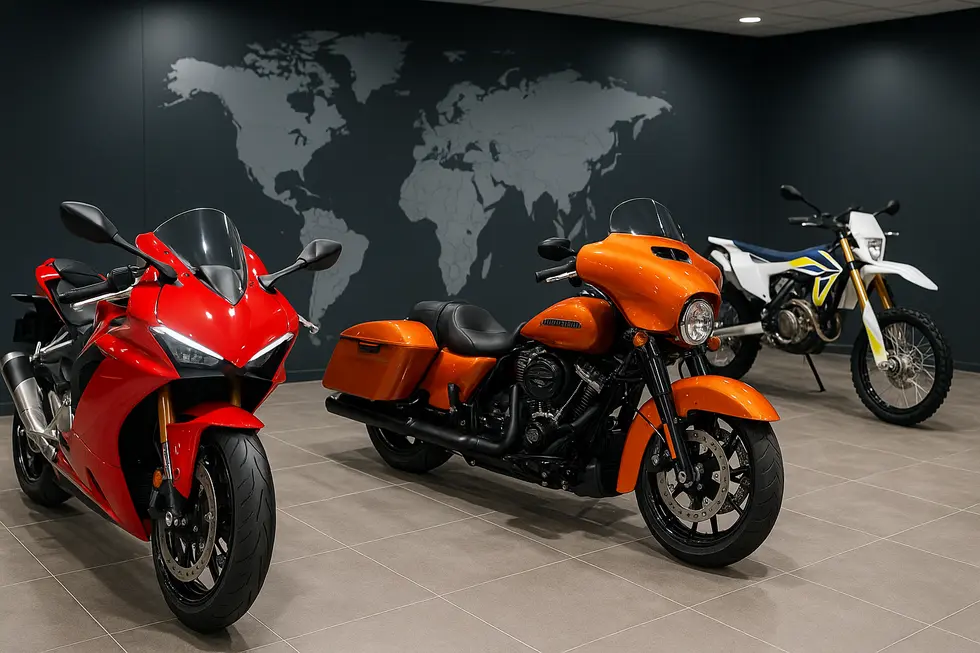Full Fairing Motorcycles: Enhancing Performance and Protection for Business Success
August 28, 2025 | by summitfairings
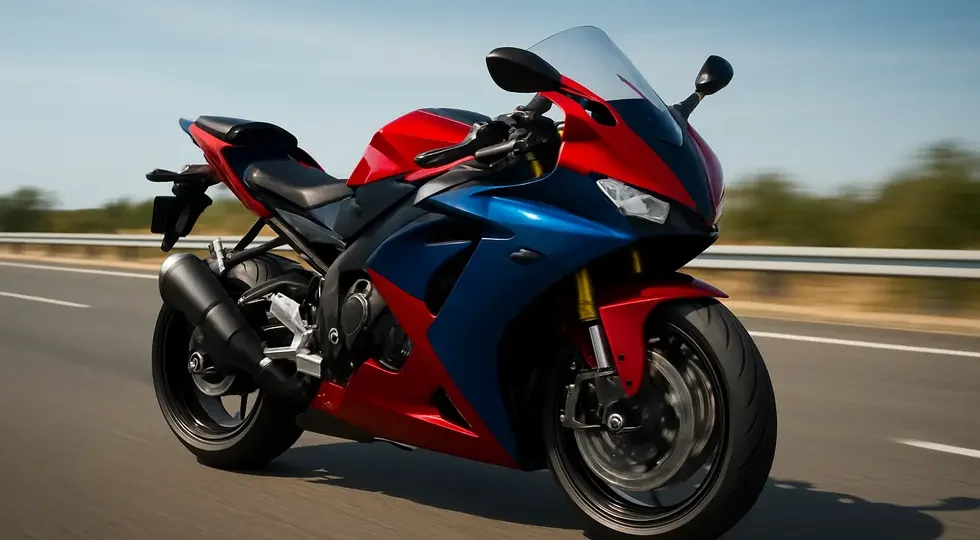
Introduction
Full fairing motorcycles represent an integral advancement in motorcycle design, prioritizing aerodynamic efficiency and rider protection. For business owners in the motorcycle industry, understanding the value and functional benefits of full fairings is essential. These coverings not only optimize performance by reducing air resistance but also shield riders and critical bike parts from environmental factors. This article dives into three pivotal aspects to provide a comprehensive understanding: the aerodynamic and protective benefits, the component makeup and materials used, and the common applications shaping the market relevance of full fairing motorcycles. Each chapter builds towards a clearer perspective on how investing in full fairing motorcycles can enhance product offerings, drive customer satisfaction, and foster business growth.
Tables of Contents
Chapter 1: Aerodynamics and Protective Benefits of a Full Fairing Motorcycle
- Streamlined Power: How Full Fairings Enhance Speed, Stability, and Control
- Enhancing Rider Comfort and Safety Through Full Fairing Design
- Cutting-Edge Aerodynamic Innovations Elevating Full Fairing Motorcycle Performance
- How Full Fairings Enhance Motorcycle Stability and Precision Handling
- Balancing Performance, Comfort, and Cost: The Complex Trade-offs in Full Fairing Motorcycle Design
Chapter 2: Component Composition and Materials of a Full Fairing Motorcycle
- Essential Structural Elements and Advanced Materials Shaping Full Fairing Motorcycles
- Precision Manufacturing and Material Science Behind Full Fairing Motorcycle Components
- How Aerodynamics and Material Innovation Drive Full Fairing Performance and Protection
- Enhancing Function and Style: Integrating Optional Accessories Within Full Fairing Motorcycle Components
- Balancing Cost, Performance, and Design: Economic and Model-Specific Material Choices for Full Fairings
Chapter 3: Common Applications and Functional Uses of Full Fairing Motorcycles
- How Full Fairings Drive Aerodynamic Excellence and Speed Performance
- Enhancing Rider Protection and Comfort Through Full Fairing Design
- Enhancing Efficiency and Durability: How Full Fairings Boost Fuel Economy and Mechanical Longevity
- Expressive Customization and Practical Enhancements in Full Fairing Motorcycles
- Enhancing Longevity and Serviceability: Restoration and Repair Benefits of Full Fairing Motorcycles
Chapter 1: Aerodynamics and Protective Benefits of a Full Fairing Motorcycle
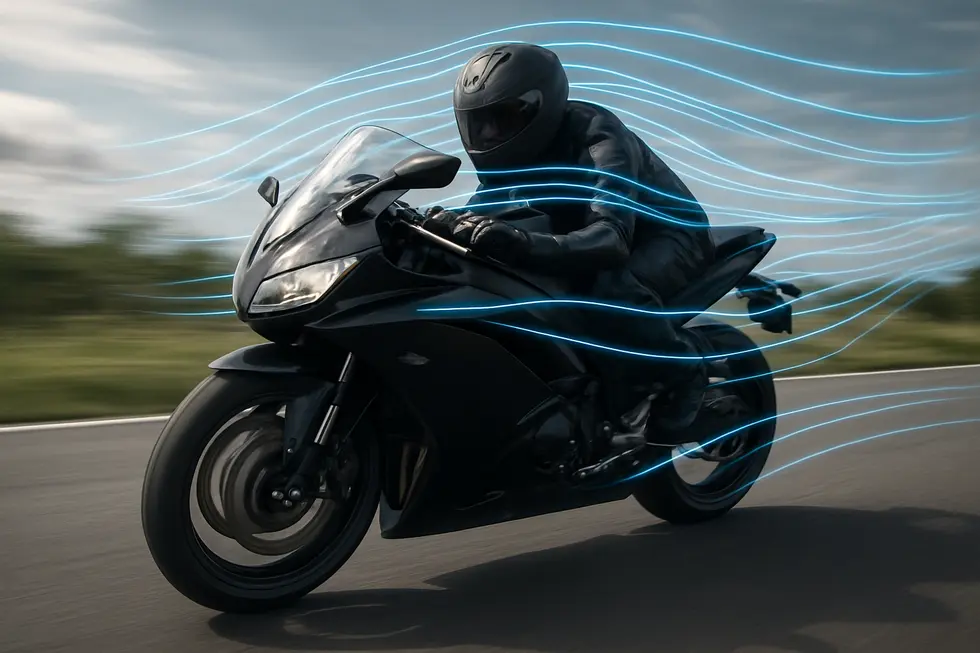
1. Streamlined Power: How Full Fairings Enhance Speed, Stability, and Control
Full fairing motorcycles are meticulously designed to maximize aerodynamic efficiency by fully encasing the front and sides of the bike. This comprehensive coverage reduces drag by deflecting wind smoothly around the rider and motorcycle, enabling higher speeds with less engine effort. The fairing’s sculpted contours minimize air turbulence, preventing buffeting that can destabilize the bike at velocity. Beyond drag reduction, some full fairings integrate winglets or specialized shapes that generate downforce, pressing the tires firmly onto the road surface. This added traction improves handling and cornering precision, especially critical in racing scenarios where every fraction of a second counts.
Effective airflow management around the chassis also stabilizes the motorcycle’s behavior, significantly reducing rider fatigue caused by wind buffeting. Fairings protect vital components like the engine from debris or impact damage without sacrificing aerodynamic gains. Although large fairings might slightly restrict maneuverability by limiting handlebar movement or adding weight, advancements in materials such as carbon fiber help maintain rigidity while reducing mass, thus preserving precise control.
Innovative breakthroughs are pushing aerodynamic boundaries further, exemplified by dynamic systems featuring movable vents that adapt airflow to riding demands. These vents can redirect air around radiators when cooling needs are low, minimizing turbulent hot air and cutting drag to boost top speed and fuel economy efficiently.
However, racing regulations increasingly balance the benefits of downforce with the penalties of drag by restricting excessive fairing surface area to optimize overall performance. This delicate interplay underscores the importance of thoughtful fairing design in achieving the perfect blend of speed, stability, and rider confidence.
Explore more about how high-quality motorcycle fairings contribute to enhanced performance at Summit Fairings’ blog.
For a detailed explanation of aerodynamic effects, see this insightful YouTube analysis.
2. Enhancing Rider Comfort and Safety Through Full Fairing Design
The design of a full fairing motorcycle extends beyond aerodynamic gains to deliver profound benefits in rider comfort and protection. By enveloping the front and sides of the bike, including critical components like the engine and handlebars, full fairings serve as a shield against relentless headwinds and disruptive crosswinds. This shielding effect significantly reduces wind fatigue, allowing riders to maintain focus and control without battling persistent buffeting, especially during long-distance or high-speed rides.
The stabilization of airflow around the rider not only diminishes physical strain but also helps regulate body temperature by minimizing wind chill—an essential comfort factor during cooler weather or extended travel. Furthermore, the fairing’s coverage acts as a barrier against debris, rain, and other environmental elements, enhancing safety by preventing direct impact that could otherwise lead to injury or distraction. This protection extends to vital motorcycle parts, potentially reducing maintenance issues caused by exposure.
While naked bikes may favor an upright posture for casual comfort, they lack the comprehensive wind defense that full fairings provide, making the latter preferable for riders prioritizing endurance and speed. The integration of multiple fairing components—such as the nose fairing, side panels, and belly pan—works seamlessly to create a controlled aerodynamic envelope that enhances both protection and comfort without compromising performance.
For riders seeking improved stability and reduced fatigue on highways or spirited rides, full fairing motorcycles present a balanced solution that addresses wind and environmental challenges head-on. To explore more about the range of fairing options designed to bolster both comfort and style, visit explore the best motorcycle fairings.
3. Cutting-Edge Aerodynamic Innovations Elevating Full Fairing Motorcycle Performance
The evolution of full fairing motorcycles has moved beyond static panels to embrace sophisticated aerodynamic technologies that enhance both performance and rider experience. Central to these advances are dynamic systems designed to optimize airflow in real time, adapting to varying conditions for maximum efficiency and control.
One breakthrough involves electronically controlled vents incorporated into the side bodywork. These vents adjust automatically based on engine temperature and riding speed, cleverly redirecting airflow to minimize drag without compromising cooling. By preventing turbulent hot air from disturbing the external flow, such systems reduce aerodynamic resistance, boost top speed, and improve fuel economy—achieving these gains while adding minimal weight.
Complementing active components, precision-shaped fairings refined through computational fluid dynamics create smoother airflow patterns around the motorcycle. This not only cuts down on helmet buffeting and wind noise but also enhances rider comfort during long-distance rides. Some touring models utilize adjustable lower vents to allow riders to tailor ventilation to weather conditions, balancing protection and airflow.
Race-focused designs push aerodynamic innovation further by integrating wing-like extensions onto swingarms and rear sections. These features generate downforce that presses the motorcycle into the track during cornering, countering centrifugal forces and improving tire grip. Ground-effect elements also create low-pressure zones beneath the bike, effectively “sucking” it closer to the asphalt to increase stability in aggressive maneuvers.
Collectively, these technological steps reflect a shift toward intelligent, adaptive aerodynamics in full fairing motorcycles. By seamlessly blending thermal management with dynamic airflow control and advanced shaping, modern fairings achieve multifaceted benefits—enhancing speed, stability, fuel efficiency, and rider comfort across disciplines from street touring to high-speed racing.
For enthusiasts interested in exploring the broad variety of styles and innovations in motorcycle fairings, a valuable resource is available at Explore the Best Motorcycle Fairings at Summit Fairings.
(Source: https://www.motorcycledaily.com/)
4. How Full Fairings Enhance Motorcycle Stability and Precision Handling
A full fairing plays a crucial role in refining a motorcycle’s stability and handling by harnessing aerodynamic principles and structural advantages. By enveloping the bike’s front and sides, it streamlines airflow, drastically cutting down drag and turbulence that often cause instability at high speeds. This aerodynamic efficiency reduces buffeting and wind resistance, allowing the rider to maintain steadier control even during rapid acceleration or on straightaways.
Beyond reducing drag, full fairings can generate downforce through winglets or aerodynamic features designed to press the tires firmly against the road. This increased grip translates into improved traction and cornering stability, particularly vital for sport and racing motorcycles pushing the limits in sharp turns or aggressive maneuvers. The enhanced contact with the pavement gives riders greater confidence and responsiveness.
Material choice further influences handling dynamics. Lightweight composites like carbon fiber not only lower the motorcycle’s overall weight but also help shift its center of gravity downward. A lower center of gravity enhances maneuverability by making the bike more agile and easier to lean into corners. The rigidity of these materials also stiffens the chassis, minimizing unwanted flex at high speeds and preserving precise handling characteristics.
Structurally, the fairing and its mounting hardware stabilize critical components, reducing vibrations that could destabilize the bike or fatigue the rider. Additionally, fairings shield essential parts from damage in minor incidents, preserving the bike’s performance and safety.
When combined with advanced suspension systems, these aerodynamic and structural benefits create a motorcycle that handles smoothly across diverse road conditions. Riders experience a more predictable, stable ride whether sport riding or navigating everyday traffic.
For riders seeking deeper insight and visual analysis, the video “Do Motorcycle Fairings Affect Handling?” by The Racing Xpert offers an excellent demonstration.
Explore more about selecting the ideal fairings and their impact at Explore the Best Motorcycle Fairings at Summit Fairings.
5. Balancing Performance, Comfort, and Cost: The Complex Trade-offs in Full Fairing Motorcycle Design
Designing a full fairing motorcycle requires a careful balance between aerodynamics, rider comfort, aesthetics, weight, and economic factors. Full fairings dramatically enhance aerodynamic efficiency by streamlining airflow and reducing drag. This optimization translates into improved top speeds and fuel economy, especially valued by sportbike riders focused on peak performance. However, these aerodynamic gains come at the expense of added weight, which can subtly affect handling agility and the bike’s overall responsiveness compared to lighter, less covered naked or half-faired motorcycles.
Beyond performance, full fairings offer substantial wind and weather protection. This shields riders from harsh environmental elements, significantly reducing fatigue during long-distance rides. This advantage often coincides with sleek, modern styling that integrates advanced lighting and design elements to enhance visibility and appeal. Yet, the same coverage that protects can detract from the visual ruggedness and mechanical exposure favored by riders who prefer the stripped-down aesthetics of non-faired motorcycles.
Versatility is another consideration. While full fairings optimize stability at high speeds and on race tracks, their bulkier profile may limit agility and convenience in urban or stop-and-go riding scenarios. This limits their practicality for riders seeking a nimble, all-purpose bike.
On the economic front, full fairings introduce higher material and manufacturing costs. Using durable, molded ABS plastic allows for complex shapes and vibrant finishes, but drives up production expenses. Furthermore, designing these aerodynamic shells demands advanced engineering, often relying on computational fluid dynamics (CFD) to fine-tune airflow and rider comfort, increasing development time and investment.
Consequently, full-faired motorcycles are typically positioned in premium market segments, reflected by higher retail prices. These costs mirror not only the materials and craftsmanship but also the integrated features and engineering sophistication.
Manufacturers must therefore align design decisions with target users—sportbike enthusiasts prioritize aerodynamic advantage and style, while touring riders weigh comfort and protection against added weight and expense.
For riders interested in exploring the range of available options, a broad selection of high-quality motorcycle fairings can be found at Summit Fairings.
Harley-Davidson Street Glide’s Batwing fairing, designed using computational fluid dynamics, exemplifies how advanced engineering can optimize the balance between aerodynamics and rider comfort.
Chapter 2: Component Composition and Materials of a Full Fairing Motorcycle
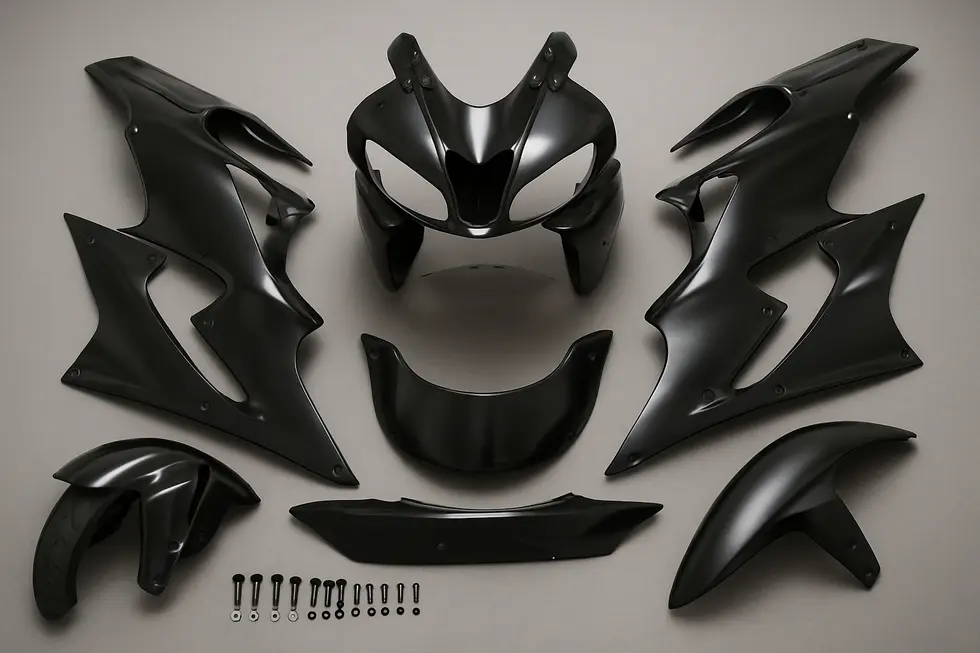
1. Essential Structural Elements and Advanced Materials Shaping Full Fairing Motorcycles
The structural framework of a full fairing motorcycle is a carefully engineered assembly designed to encompass and protect key mechanical components while enhancing aerodynamic performance. Central to this architecture are the front upper fairing, side panels, lower fairing, and the tail unit. Each of these components plays a crucial role not only in streamlining airflow but also in shielding the engine, frame, and rider interface elements from environmental hazards.
Material selection is pivotal to achieving the balance between lightweight strength, durability, regulatory requirements, and cost-efficiency. High-performance motorcycles, particularly racing variants, favor carbon fiber due to its exceptional strength-to-weight ratio. Carbon fiber parts, often produced through sophisticated autoclave curing with pre-preg fabrics, achieve remarkable rigidity and minimal weight, exemplified by the race-ready fairings on premier sportbikes. These parts typically have a glossy finish, eliminating the need for additional surface treatments, and they support swift installation of decals or stickers.
Black fiber composites serve as a middle ground, offering a lightweight alternative where carbon fiber use is limited by regulations or budget constraints. They provide improved performance characteristics compared to fiberglass but at a more accessible cost than carbon fiber. Fiberglass, while widespread due to its affordability and ease of molding, is generally less desirable for high-stress applications because its cold-cured process yields lower structural integrity.
For street motorcycles, ABS plastic remains the most prevalent material. Its strength, impact resistance, and precise moldability enable the creation of complex fairing shapes that fit impeccably. ABS balances durability and cost, making it a favorite among everyday riders and those seeking economical customization options.
Additional components like windscreens or mudguards may incorporate composite blends tailored to performance demands versus expense, rounding out the structural ensemble.
By integrating materials such as carbon fiber, black fiber, fiberglass, and ABS plastic across the front upper fairing, side panels, lower fairing, and tail unit, manufacturers tailor full fairings for specific uses—from professional racing to street riding—ensuring optimized aerodynamics, protection, and regulatory compliance. This material diversity underpins the sophisticated design of full fairing motorcycles, marrying form and function seamlessly.
For those interested in exploring durable and affordable options for street motorcycle fairings, discover affordable motorcycle fairings at Summit Fairings offers valuable insights.
(Reference: Ducati Panigale V4/S race fairing specifications)
2. Precision Manufacturing and Material Science Behind Full Fairing Motorcycle Components
The manufacturing techniques and material choices of full fairing motorcycle components define their performance, durability, and cost-effectiveness. Among the most prominent materials are carbon fiber composites and ABS plastic, each representing distinct approaches to balancing strength, weight, and production complexity.
Carbon fiber fairings represent the pinnacle of advanced manufacturing, employed predominantly on high-performance motorcycles. The production begins with prepreg carbon fiber fabrics, meticulously layered and cured inside autoclaves, ovens that apply high pressure and temperature to ensure flawless bonding and a superior surface finish. This process not only aligns the carbon fibers optimally to maximize stiffness but also results in components roughly three times stiffer than steel at a fraction of the weight. Following curing, robotic cutting systems provide exact dimensions essential for perfect fitment on the motorcycle frame. For enhanced durability and UV protection, a powder coating is applied, often finished with a silk matte clear coat that resists environmental wear while preserving aerodynamic shape integrity.
Conversely, ABS plastic represents a practical, cost-effective material choice mostly popular for OEM and aftermarket full fairing kits. Produced via precision injection molding, these parts benefit from consistent shape accuracy and sufficient toughness for everyday use. Multi-layer painting sequences—starting with sanding and priming, followed by paint and a clear coat—ensure weather resistance and aesthetic appeal. While ABS lacks the extreme stiffness of carbon fiber, it excels in providing durable, economical coverage suited for mass-market applications.
This contrast in manufacturing and material properties reveals how the full fairing motorcycle’s component makeup is carefully engineered not only for protective function but also to optimize aerodynamic efficiency and rider experience within cost and performance constraints. For those seeking deeper insights on high-quality fairing options, exploring reliable aftermarket sources like Summit Fairings can be invaluable.
More about the advanced carbon fiber manufacturing process on cutting-edge motorcycles is detailed in the BMW M 1000 RR 2025 technical overview.
3. How Aerodynamics and Material Innovation Drive Full Fairing Performance and Protection
A full fairing motorcycle integrates aerodynamic design and protective materials to maximize both performance and rider safety. Enveloping most of the front and sides, including the engine, frame, and handlebars, the fairing’s streamlined contours drastically reduce air resistance. This lowered drag enhances acceleration, enables higher top speeds, and improves fuel efficiency by smoothing airflow and minimizing turbulence. Advanced designs often include aerodynamic wings or winglets, which generate downforce to reduce front-wheel lift and improve grip during cornering, thus boosting high-speed stability.
Beyond airflow management, full fairings serve as a protective barrier against wind blast, debris, and inclement weather, creating a calmer riding environment that lowers fatigue and shields critical components. To achieve the delicate balance between durability and lightness essential for optimal riding dynamics, modern fairings employ high-grade materials such as fiberglass, carbon fiber, and engineered composites. These materials provide resilience against impacts and environmental stressors without substantially adding weight.
Contemporary advancements extend to active aerodynamic systems, featuring vents and vanes that automatically adjust to optimize airflow and thermal regulation. For instance, motor-controlled air outlets help dissipate heat while maintaining low drag. Racing motorcycles often incorporate supplemental aerodynamic aids including swingarm fairings and rear diffusers, which enhance downforce and ground effects to maintain tire grip in aggressive lean conditions. These innovations collectively refine the motorcycle’s thermal management, stability, and handling.
By seamlessly combining sophisticated shapes with cutting-edge lightweight composites, full fairings elevate motorcycle efficiency and resilience. This synergy underpins the essential role of component materials and aerodynamic features in transforming both rider experience and machine capability. For more on the diversity of fairing materials and designs, explore options at Summit Fairings’ extensive motorcycle fairing selection.
External detailed reference on aerodynamic wing design can be found at Ducati Panigale V4 aerodynamic features.
4. Enhancing Function and Style: Integrating Optional Accessories Within Full Fairing Motorcycle Components
Full fairing motorcycle kits primarily consist of precision injection-molded high-grade ABS plastic, chosen for its balance of durability, flexibility, and cost-efficiency. Beyond the core components—which include the front nose fairing, paired side panels, lower belly pan with heat shielding, tail section, and tire fenders—riders have the option to customize and enhance their motorcycles through a range of accessories that seamlessly integrate with the base kit. These optional elements, such as windscreens, tank covers, seat cowls, and installation hardware kits, not only augment functionality but also elevate the bike’s aesthetic appeal.
Windscreens often serve a dual purpose: improving aerodynamic performance by smoothing airflow and increasing rider comfort by minimizing wind buffeting during high-speed rides. Tank covers provide protective layering for the fuel tank while offering riders an opportunity to personalize the bike’s look with varying finishes or textures. Seat cowls replace passenger seats to emphasize a sportier, sleek profile, catering to riders prioritizing style and weight reduction.
Some fairing kits incorporate specialized mounting brackets tailored for specific motorcycle models like Harley-Davidson’s Dyna/FXR line, ensuring precise fitment and maintaining the structural integrity of the bike’s frame. Additionally, more advanced integrations such as audio inner fairings enable the clean installation of speakers and amplifiers inside the factory fairing without compromising the design’s streamlined appearance.
While ABS remains the industry standard material due to its impact resistance and ease of manufacturing, aftermarket variations may use fiberglass or reinforced composites to reduce weight or enhance performance in racing contexts. These materials must still meet strict criteria for durability, paint compatibility, and bolt-on installation simplicity.
The modular nature of these kits and their accessories encourages customization tailored to rider preferences and specific motorcycle models, spanning brands like Suzuki, Honda, Yamaha, BMW, Ducati, and more. This balance of functional enhancements with stylistic upgrades exemplifies how component composition and accessory integration define the full fairing motorcycle experience. For further insights on versatile motorcycle fairings, explore unmatched choices in motorcycle fairings.
External reference: https://blog.summitfairings.com/myths-facts-about-motorcycle-fairings/
5. Balancing Cost, Performance, and Design: Economic and Model-Specific Material Choices for Full Fairings
Selecting the right materials and components for a full fairing motorcycle demands a careful balance between economic constraints and the specific requirements of each model. Manufacturers must consider cost-effectiveness while ensuring performance, durability, and compatibility with a bike’s design. Commonly, ABS plastic emerges as a favored choice in mass-produced models due to its blend of impact resistance, moderate weight, and affordable manufacturing through injection molding. This material supports both the durability needed for daily riding and the precision fit essential to maintaining aerodynamic integrity.
In contrast, fiberglass offers a budget-friendly alternative with relatively simple repairability and modification potential, appealing especially for custom or aftermarket fairings. Its heavier nature, however, can deter performance-focused applications due to added weight. For premium sportbikes and racing motorcycles, carbon fiber reigns supreme despite its high cost. Its exceptional strength-to-weight ratio means significant weight reductions, contributing to better acceleration, handling, and fuel efficiency. Such advantages justify the expense when every gram counts on the racetrack or for elite performance machines.
Each motorcycle model also requires precision in fairing design to fit the frame geometry and accommodate modifications like suspension and swing-arm tweaks. These factors influence the choice of materials and their construction to avoid interference while preserving structural integrity and aerodynamics. Economic factors often push mass-market manufacturers toward ABS or fiberglass, while top-tier models invest in advanced composites that can endure environmental stressors and maintain a premium finish.
Additionally, UV resistance and surface finish quality contribute to material selection, as fairings must endure exposure to sunlight and debris without rapid degradation. Customization trends further drive demand for materials that are easy to paint and modify, broadening appeal across different market segments.
For a comprehensive overview of material options tailored for motorcycle fairings, explore insights on affordable and high-quality alternatives in the wide selection presented at Summit Fairings’ blog.
More detailed considerations regarding fitment and racing modifications can be found via external resources such as Bagger Racing League regulations.
Chapter 3: Common Applications and Functional Uses of Full Fairing Motorcycles
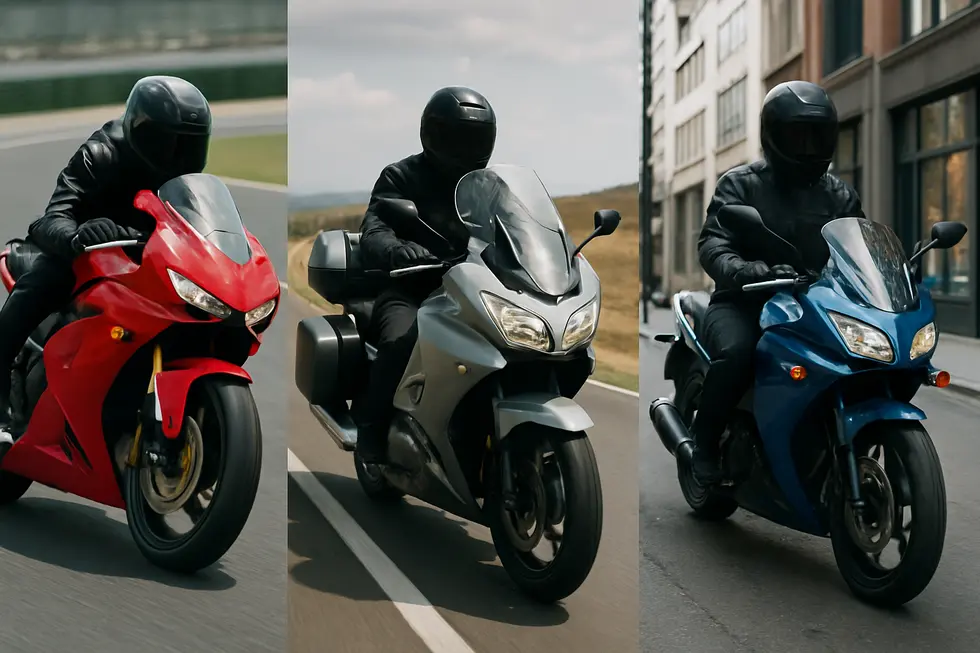
1. How Full Fairings Drive Aerodynamic Excellence and Speed Performance
Full fairings are integral to enhancing the aerodynamic profile and speed capabilities of motorcycles, especially in applications where performance is essential. By enveloping most of the bike’s front and sides—including engine, frame, handlebars, and instrumentation—the full fairing streamlines airflow, sharply reducing drag and turbulence around both machine and rider. This sculpted shell acts as an aerodynamic shield that allows motorcycles to cut through air more efficiently, improving stability and enabling higher top speeds without additional engine power.
In practical terms, this aerodynamic refinement means riders experience less wind resistance and buffeting, which translates into more controlled handling at high velocities. Some fairing designs incorporate advanced engineering techniques like computational fluid dynamics to optimize flow patterns around critical components, further enhancing speed potential and rider comfort. Innovations include adjustable vents integrated into the fairing to balance thermal management, regulating engine heat without compromising aerodynamic gains.
The result is a motorcycle that not only achieves superior velocity and acceleration but also benefits from improved fuel efficiency due to reduced air drag. These performance advantages make full fairings a staple in racing motorcycles and sport bikes, where every increment of speed and efficiency counts. Even some touring motorcycles adopt full fairings to blend aerodynamic efficiency with rider protection on long-distance rides.
Unlike naked bikes that expose their engine and frame to the air, creating significant drag and rider fatigue, fully faired motorcycles maintain a smooth external profile to slice through wind resistance. While adding fairings can increase weight and alter the bike’s visual style, the trade-off often favors enhanced performance and comfort for speed-focused riders.
For readers interested in deeper insights on the aerodynamic role of race motorcycle fairings, this detailed explanation provides valuable visual context: Aerodynamics Explained.
Explore more about the benefits of motorcycle fairings in performance and style at Summit Fairings Blog.
2. Enhancing Rider Protection and Comfort Through Full Fairing Design
Full fairing motorcycles excel at providing riders with enhanced protection and comfort, making them a preferred choice for sport-touring and long-distance riding. By enveloping the bike’s front and sides, the full fairing acts as a robust shield against wind, debris, and harsh weather. This protective coverage extends beyond the rider to critical mechanical components, safeguarding the engine and frame from minor impacts and environmental hazards, which in turn supports durability and reliable performance.
The integration of a windshield within the fairing design plays a vital role in optimizing airflow around the rider. This refined aerodynamics minimizes wind blast and turbulence, significantly reducing rider fatigue during extended highway journeys. Such wind management not only improves comfort but also helps stabilize the motorcycle by generating downforce, allowing for secure handling at higher speeds. Ergonomic considerations in full fairings further promote rider endurance by supporting improved posture and reducing physical strain over long hours on the road.
Beyond comfort, the aerodynamic advantage of full fairings contributes to improved fuel efficiency by lowering drag, a key factor in touring scenarios where conserving fuel is beneficial. Some fairing systems incorporate modular components that allow selective removal of lower panels to boost engine cooling during warmer conditions, balancing protection and performance needs.
While full fairings do add some weight relative to naked bikes, this trade-off favors riders seeking enhanced wind protection, safety, and comfort on longer rides. The substantial shield these fairings provide makes them highly suited for riders prioritizing all-weather readiness and fatigue reduction. Proper maintenance is essential, as damaged fairings can compromise both appearance and the practical benefits they offer.
For riders exploring options and details about motorcycle fairings, this resource on motorcycle fairings at Summit Fairings presents valuable insights on styles and functionality.
3. Enhancing Efficiency and Durability: How Full Fairings Boost Fuel Economy and Mechanical Longevity
Full fairing motorcycles stand out not only for their striking appearance but also for tangible benefits in fuel efficiency and mechanical durability. By enveloping much of the bike’s front and sides, full fairings dramatically reduce aerodynamic drag. This streamlined design allows the engine to maintain cruising speeds with less effort, particularly on highways where sustained velocity amplifies aerodynamic impact. As a result, riders often experience improved fuel economy compared to naked or partially faired motorcycles. For instance, certain sportbike models equipped with full fairings have demonstrated real-world fuel efficiency around 28–29 km per liter (66–68 mpg), striking a fine balance between spirited riding and economical operation.
Beyond improving mileage, full fairings contribute to the mechanical longevity of a motorcycle. They provide an additional barrier against hostile environmental elements such as dirt, debris, and moisture, which can accelerate wear on exposed engine parts. This protective layer, combined with modern engineering enhancements—such as advanced lubrication systems that increase oil flow and the use of friction-reducing materials—helps mitigate engine stress and deterioration over time. Lightweight internal components and optimized combustion chamber designs further enhance durability, reducing vibrations and heat strain that typically degrade performance.
These combined effects mean full fairing motorcycles tend to support longer-lasting engine health, making them well-suited for riders who seek performance without sacrificing reliability or operational costs. The benefits extend beyond pure speed and style, solidifying full fairings as practical assets for both everyday commuters and long-distance sport touring enthusiasts. For more insights into the versatility and choices within this category, explore affordable motorcycle fairings at Summit Fairings.
External testing and expert reviews consistently affirm these advantages, underscoring how full fairings efficiently combine aerodynamic gains with engine protection to optimize both fuel consumption and component durability for enhanced riding experiences.Kawasaki Ninja 300 Fuel Economy Tested – Autocar India
4. Expressive Customization and Practical Enhancements in Full Fairing Motorcycles
Full fairing motorcycles offer a unique canvas for riders seeking to express individual style while benefiting from performance-driven design. Aesthetic customization empowers riders to transform their motorcycles with diverse color schemes, ranging from glossy and matte finishes to advanced effects like chameleon or metallic flakes. Beyond paint, custom graphics such as race numbers, personal logos, or sponsor decals personalize each bike’s identity. These custom fairing kits are thoughtfully engineered to fit precisely and come pre-drilled for straightforward installation, ensuring a seamless blend of form and function without requiring modifications.
While striking visuals are a prime attraction, full fairings deliver critical functional advantages that cannot be overlooked. By fully enveloping key components like the engine and frame, they substantially improve aerodynamics, reducing drag to stabilize handling and boost top speed—a key benefit on both highways and race tracks. For example, the aerodynamic shaping found on premier sportbikes creates an air bubble to shield the rider, enhancing comfort during extended rides. Additionally, integrated aerodynamic features such as wings help generate downforce, improving front tire grip during aggressive braking and sharp corners.
Full fairings also increase rider comfort by deflecting wind and debris, an advantage that becomes especially evident at highway speeds or on longer journeys. In some designs, they aid engine cooling by channeling airflow strategically over radiators, marrying aesthetics with mechanical benefits. Numerous specialized providers offer customization services, helping riders bring personalized visions to life while retaining the precision fit and durability expected from high-grade ABS plastic panels.
This balance of expressive customization and purposeful design cements full fairing motorcycles as favorites for enthusiasts who demand both visual impact and enhanced riding dynamics. For riders interested in exploring custom fairing options with guaranteed fitment quality and stylish finishes, exploring reputable sources dedicated to motorcycle fairings can offer valuable insights and solutions.https://blog.summitfairings.com/explore-summit-fairings-your-go-to-destination-for-motorcycle-fairings/
For deeper details on aerodynamic innovations directly impacting function and comfort, insights into models like the Ducati Panigale V4 highlight how design sophistication translates into elevated riding experiences.[4]
5. Enhancing Longevity and Serviceability: Restoration and Repair Benefits of Full Fairing Motorcycles
Full fairing motorcycles offer significant restoration and repair advantages that directly support their common functional uses. The comprehensive coverage enveloping the engine, frame, and front components acts as a first line of defense, protecting these critical parts from debris, weather, and minor collisions. This built-in shielding reduces wear and tear, extending the lifespan of mechanical elements under routine riding conditions or during light impacts.
When it comes to restoring a motorcycle after damage or long-term use, the availability of precision-engineered aftermarket full fairing kits plays a pivotal role. Made from durable, high-quality ABS plastic, these kits are designed for exact fitment consistent with original specifications. This ensures that the motorcycle’s aerodynamic efficiency and structural integrity remain uncompromised post-restoration, preserving both performance and aesthetics.
Although full fairings cover more surface area than partial fairings, modern designs frequently incorporate modular, removable panels. This thoughtful engineering innovation balances protection with serviceability, enabling mechanics and riders easier access for repair or maintenance without dismantling the entire bodywork. As a result, routine checks and technical servicing become more straightforward, minimizing downtime and maintenance difficulty.
Moreover, full fairings contribute practically to everyday riding by reducing wind buffeting on the rider and enhancing high-speed stability, benefits that persist through repair and restoration. Maintaining this balance of protection, aerodynamic efficiency, and service access is essential to the continued success and popularity of full fairing motorcycles in sport, touring, and commuter roles.
For those interested in high-quality replacement options that align with these advantages, exploring expert sources on full fairing kits can offer valuable insights into restoration best practices and material standards. Additional details contrasting full and half fairing repair considerations can be found through comprehensive resources such as The Racing Xpert’s explanation on half motorcycle fairings.
Final thoughts
Full fairing motorcycles represent a strategic fusion of form and function that appeals to both performance-driven riders and protection-conscious consumers. Their aerodynamic design not only enhances speed and fuel efficiency but also provides essential shielding for both rider and machine. The composition of these fairings, primarily using high-grade ABS plastic and meticulously engineered components, ensures durability and ease of installation—qualities that boost product satisfaction and reliability. Understanding the broad applications from racing circuits to urban streets allows businesses to tap into varied customer bases with confidence. Embracing full fairing motorcycles or kits within a product offering thus not only elevates market competitiveness but also aligns with rider priorities for performance and safety—essential factors for sustained business growth and brand loyalty.
Ready to elevate your ride? Summit Fairings delivers premium, custom-fit fairings that blend style and durability. Whether you’re chasing speed or turning heads, we’ve got your bike covered. Don’t wait—transform your machine today. Click, customize, and ride with confidence. Your perfect fairing is just a few clicks away. Act now!
About us
We are one of the leading motorcycle fairing export sites, offering over 3,000 styles across nearly all motorcycle models. At summitfairings.com, you pay 10-40% less than prices on other sites. With a commitment to customer service, we promise to respond to any inquiries within six hours, ensuring your buying experience is smooth and reliable.
RELATED POSTS
View all



